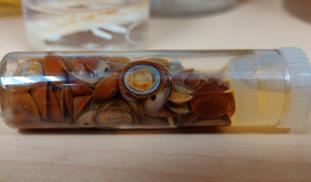Please wait...
About This Project
The deep sea is recognized as a hotspot for microplastic accumulation. While we are beginning to understand how microplastics accumulate in deep ocean sediments, few studies have investigated microplastic accumulation within organisms at vents and seeps. Access to a unique archive of biological samples provides a once-in-a-generation opportunity to establish a baseline for microplastic accumulation in hydrothermal vent and methane seep species.
More Lab Notes From This Project

Browse Other Projects on Experiment
Related Projects
How do polar bears stay healthy on the world's worst diet?
Polar bears survive almost entirely on seal fat. Yet unlike humans who eat high-fat diets, polar bears never...
Uncovering hidden insect diversity associated with a likely undescribed gall-forming midge
Does a likely undescribed species of gall-forming midge (pers. comm. Ray Gagné) on Eriodictyon plants (Yerba...
Macrofungi of the California archipelago
The eight islands of the California Archipelago are a well-studied biodiversity hotspot — but we know almost...




